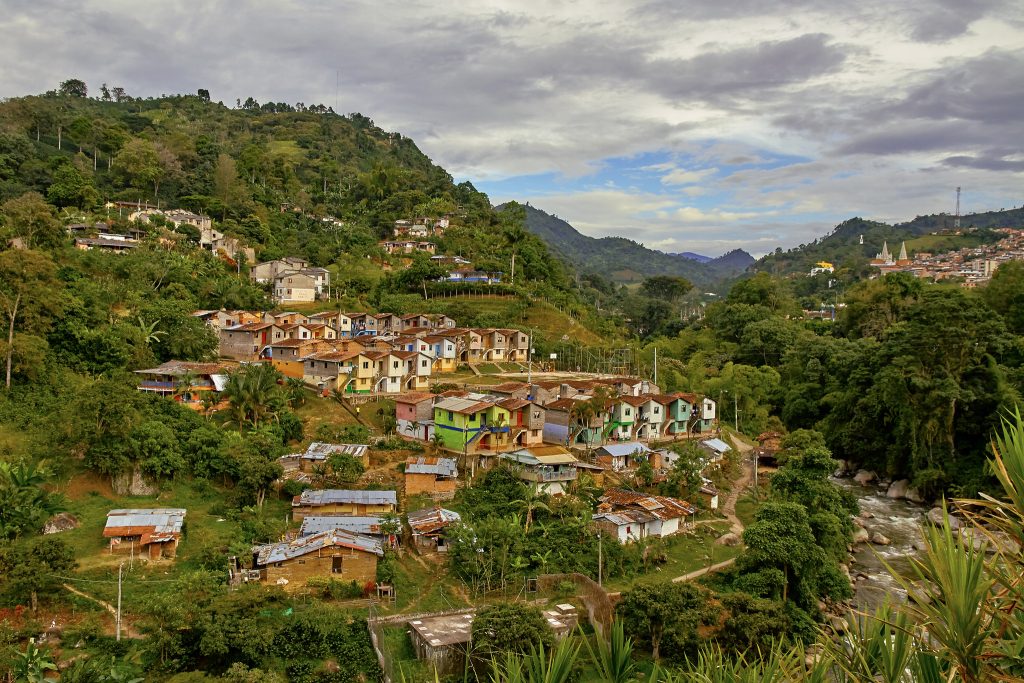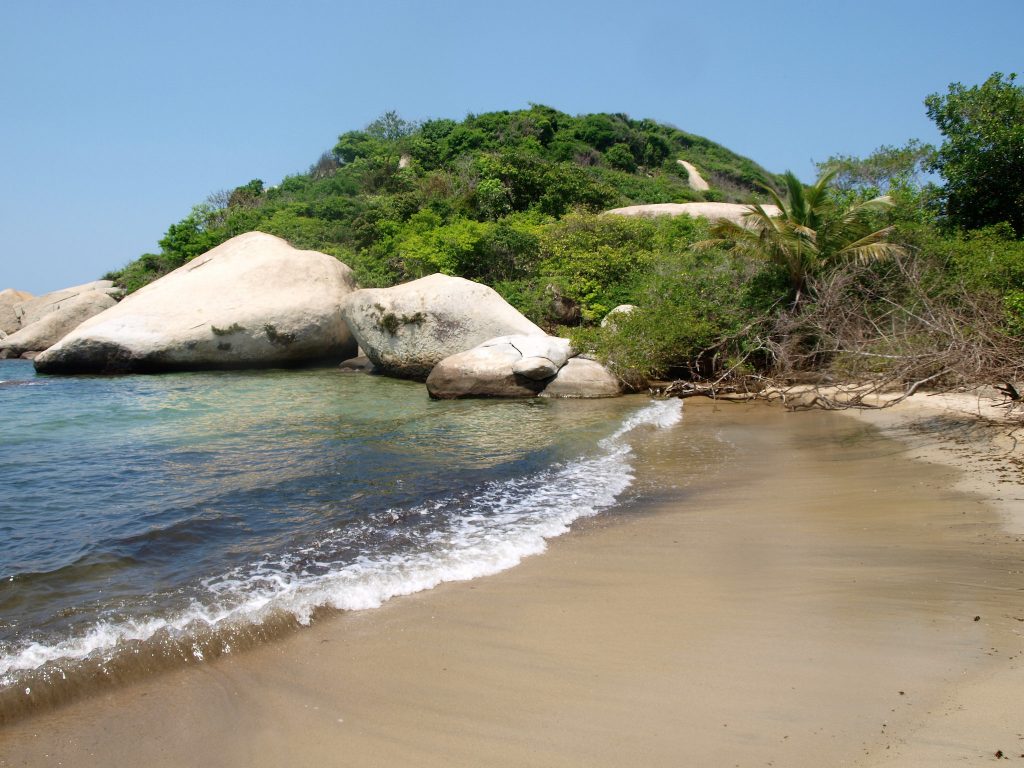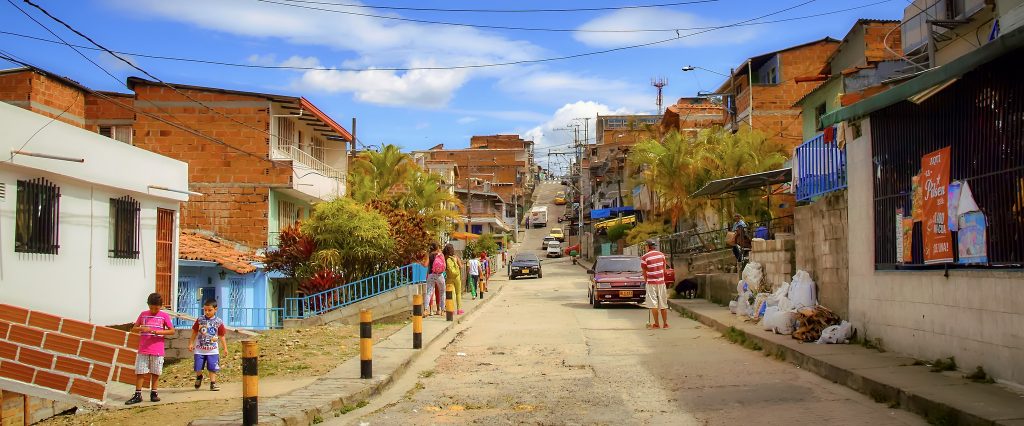A short intro to TEFL in Colombia
When most people think of that first EFL job, they often think of destinations like Thailand and China, Vietnam or Europe. But there’s also room to think outside of the box when it comes to teaching around the globe. Take TEFL in Colombia, which can transport you away from the comfort zone and into a land of misty mountains, coffee-scented hills, Spanish-flavored cities and old Conquistadores.
If that’s something you’re after in 2018, then we’re here to help. We’ve got TEFL qualifications that can get you underway in the classrooms of this Latin American gem. We’ve got in-teaching support throughout your first jobs. And we’ve got this short guide to all things TEFL in Colombia…

Where to begin
Pursuing TEFL in Colombia begins where all TEFL careers begin: With a qualification. Don’t be scared off though, we’re not talking a full-frills, 2-month, in-classroom CELTA here. We’re talking just a simple 120-hour online course sort of thing. Colombia’s schools are often rustic and the demand for native speakers in the country is quite high. That means you won’t need to jump through oodles of hoops to get the needed certificate.
What else do I need?
Well, apart from a love of coffee and samba dancing, a little wanderlust and a readiness for corn fritters, not much. A BA isn’t strictly required for teaching in Colombia, although it’s always preferred, and it might be tricky to bag a working visa without one. What’s more, if you’re hoping to get yourself one of the stable government-backed positions, you will need to have completed your bachelors. If you’re looking for the higher wages and more mainstream city jobs that come with private EFL institutions, it’s often down to the discretion of your prospective employer and the luck of getting those documents in order.

Visa requirements
If you want to waltz into Bogota and have the full spectrum of positions – government and private – open to you, it’s important you have a full working visa at the ready. They’re not too hard to come by, but the process is more admin-intensive than just your usual tourist visa, so be ready for that. It’s not recommended to try your hand at working without the proper documents. There might have been a time when it was the norm to do that in off-beat EFL destinations like this. But then again, there was also a time when Pablo Escobar ruled the streets of Medellin!
What types of TEFL jobs in Colombia are there?
TEFL in Colombia is split between the public and the private sector. On the one hand, there are loads of jobs guaranteed across the country by the government’s bilingual initiative, ranging from Barranquilla to Santa Marta and beyond. On the other hand, there are plenty of private schools run by individuals or companies that offer other sorts of jobs.
There are pros and cons for both. Government positions tend to have lower pay. But then they also have guaranteed hours, a local support network, stipends for domestic travel, help with visas and more. Private positions can often mean a little more flexibility, different styles of teaching – business English and the like – and better wages. You’ll need to think about what sort of career you’re interested in pursuing in Colombia before you decide which to go for.

Where shall I go?
Once you’ve sorted all the admin and the qualifications, the next question is exactly where you should go to TEFL in Colombia. This is one huge country. Spanning a massive cut-out of South America, it goes from the misty Amazon to the snow-topped Andes; from the palm-fringed Caribbean to the wild Pacific.
The most jobs will always be in the big cities. But there’s also more competition for them. That means you should be ready to jostle for the top positions in destinations like Bogota and Medellin. On the flip side, you should prep yourself for lower wages and lower living costs overall if you go to the backcountry towns and the mountains – the communities up there are less affluent than Colombia’s urban ones.
Government-backed positions often have the biggest spread of locations across the nation. They will also help with domestic transport from your arrival point in Bogota to the town you’ve been placed in, whether that’s the sun-kissed coast or the cloud-piercing peaks.

How to find work when doing TEFL in Colombia
It doesn’t matter if you’re aiming to TEFL in Colombia or China, Sri Lanka or Slovakia, the rule that you should make yourself available in that country rings true. Prospective employers – wherever you’re looking for work – love to be able to interview candidates quickly and offer jobs quickly. That means the single most effective way of looking for work will be getting yourself on the ground in Bogota or Cartagena or Medellin or Cali.
And the (less-than-a-)million dollar question: How much does TEFL in Colombia pay?
Pay in Colombia certainly isn’t the highest in the world. That said, it’s not going to leave you scraping your own savings to get by on black bean stews and corn bread. Average wages go from $400-$1000 USD a month, with the most money coming with private language teaching in the capital and other major metropolises.
Of course, this is just a quick intro to what TEFL in Colombia is like. If you’ve any questions, anything to add, or anything you think we’ve missed, we’d love to hear about it in the comments below…
